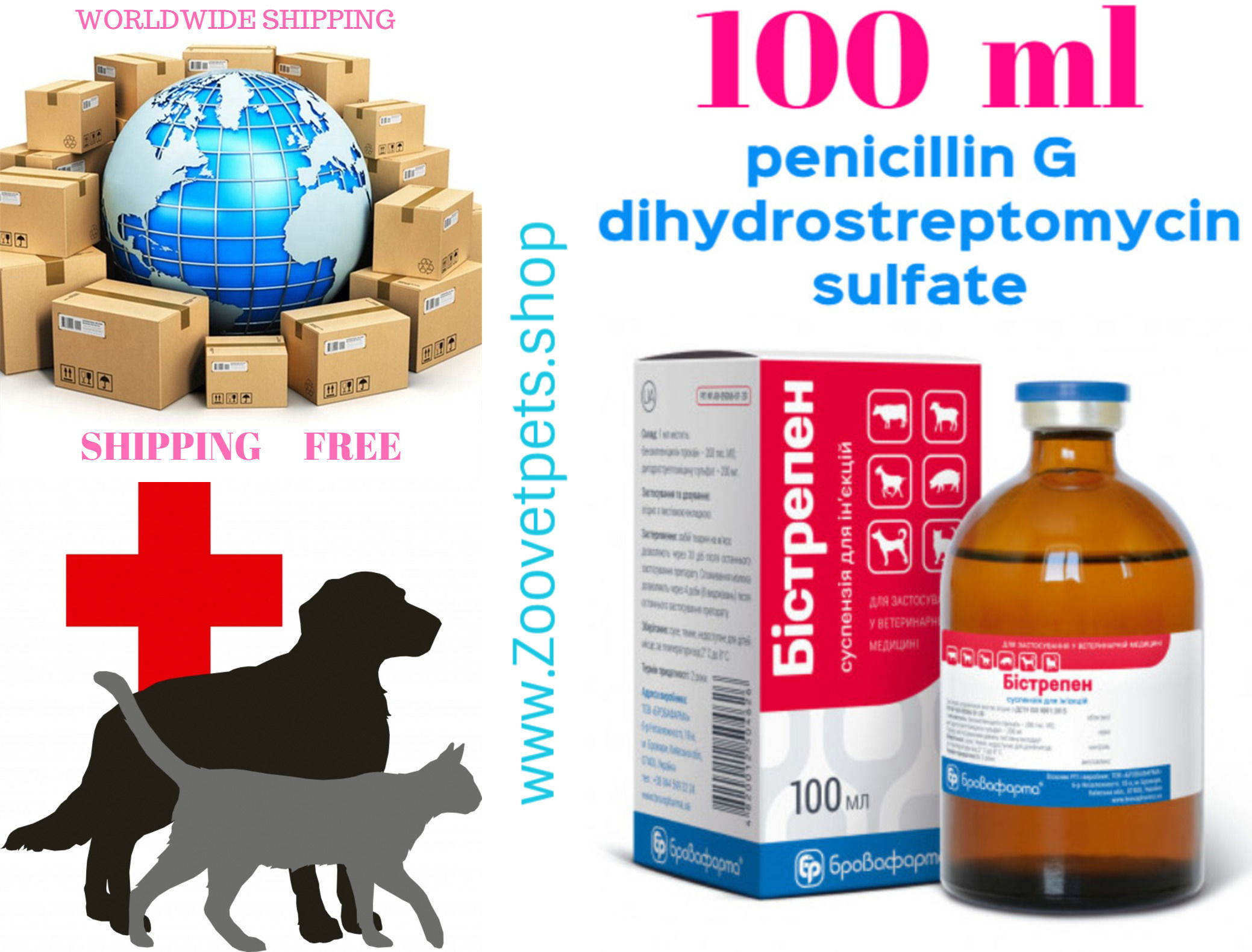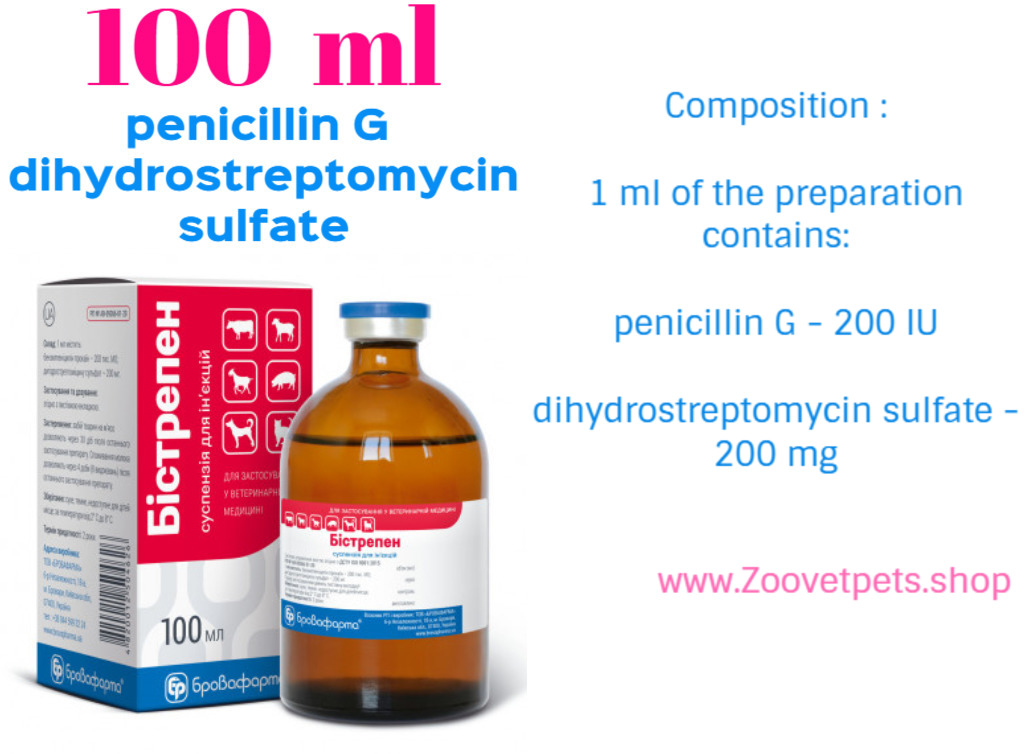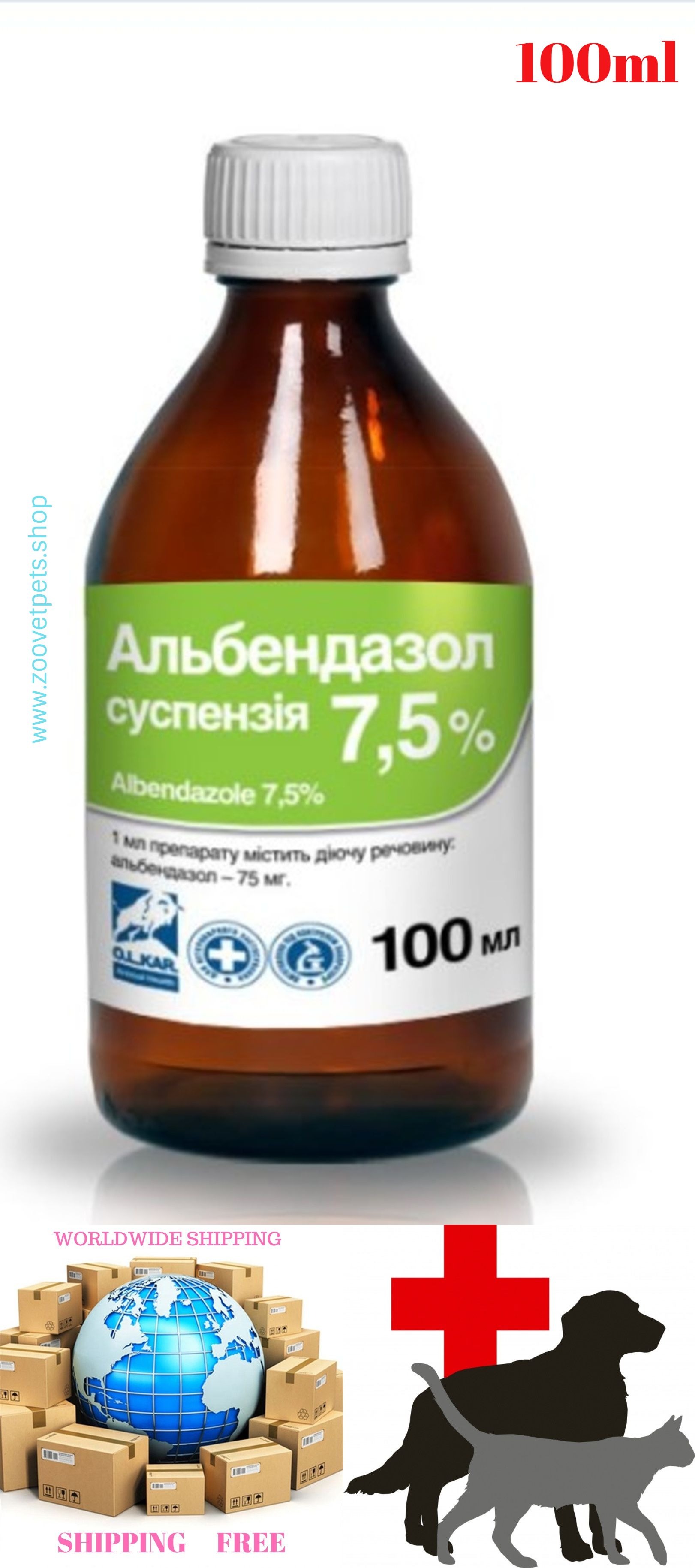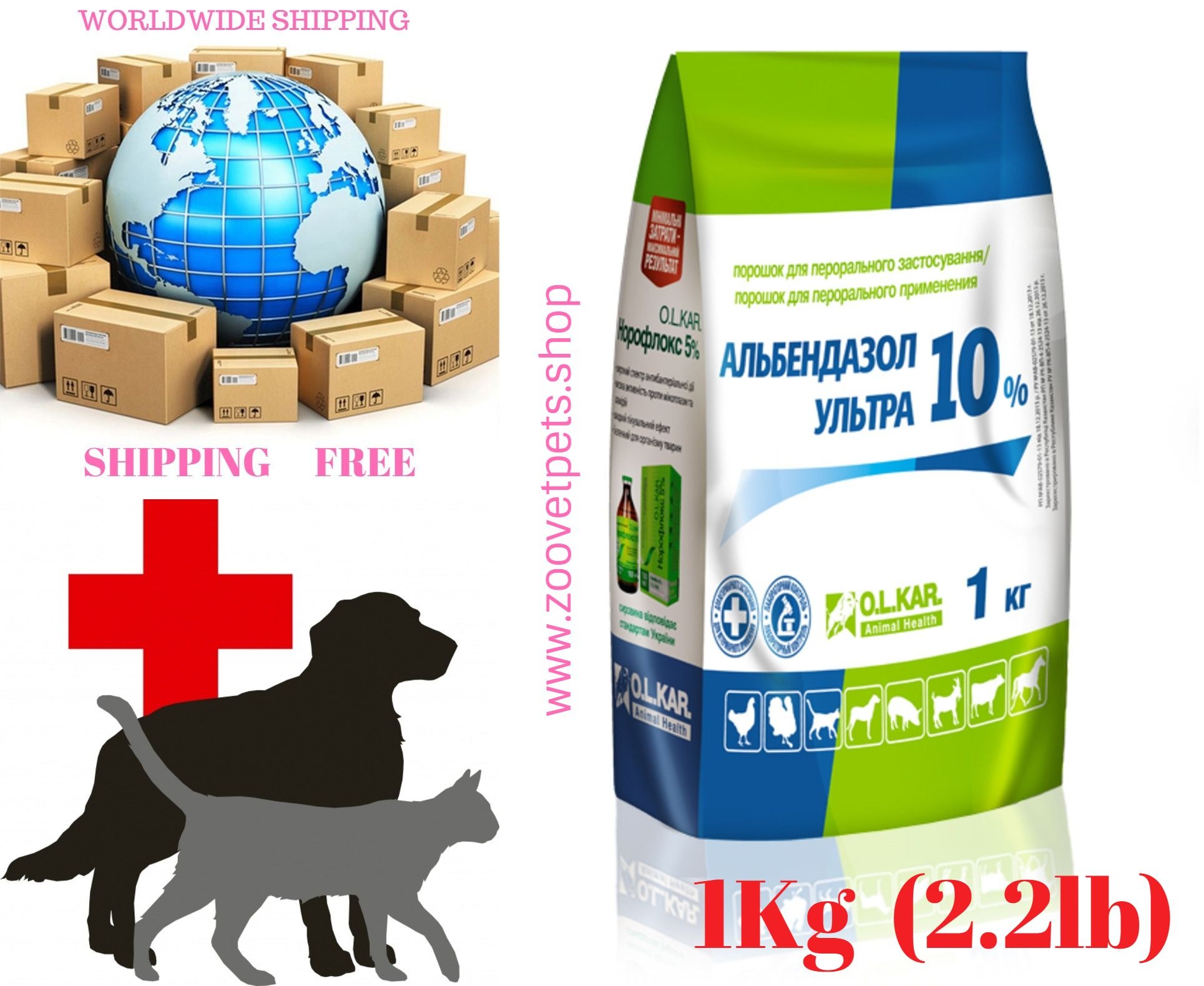Description
Description :
Liquid of white or yellow color.
Ingredients : white or yellow liquid:
Contains :
1 ml of the preparation:
Penicillin G ( benzylpenicillin procaine ) – 200 IU;
Dihydrostreptomycin sulfate – 200 mg.
Pharmacological properties :
A complex preparation based on benzylpenicillin and dihydrostreptomycin with a wide range of bactericidal action.
Benzylpenicillin procaine ( penicillin G ) is an equimolecular compound of benzylpenicillin and procaine (novocaine), which provides its prolonged action. Benzylpenicillin is a bactericidal antibiotic of penicillin series, acts on gram-positive microorganisms – Clostridium spp., Corynebacterium spp., Erysipelothrix spp.., Bacillus spp., Actinomyces spp., Listeria spp., Leptospira spp., Staphylococcus spp., Streptococcus spp., gram-negative microorganisms – Campylobacter spp., Hemophilus spp., Pasteurella spp., Actinobacillus spp. and some species of Bacteroides spp. The mechanism of action consists in violation of synthesis of peptidoglycan – mucopeptide of cellular shell, which leads to inhibition of microorganism cell wall synthesis, inhibition of bacteria growth and reproduction.
Dihydrostreptomycin is an aminoglycoside antibiotic. It acts bactericidally on gram-positive microorganisms – Staphylococcus spp., gram-negative microorganisms – Pasteurella spp., Salmonella spp., Escherichia coli, Klebsiella spp., Leptospira spp., Actinobacillus spp., Shigella spp., Francisella tularensis, Yersinia spp. Inactive in relation to anaerobic microorganisms. The bactericidal effect is due to the ability to bind to 30S subunits of ribosomes of bacteria and disturb the protein synthesis.
Benzylpenicillin procaine is slowly absorbed from the injection site when injected. The maximum serum concentration of 1.6-4.2 µg/ml is reached after 1.5-6 hours depending on the type of animal and slowly decreases during 16-24 hours. After the injection, it enters almost all organs and tissues except for cerebrospinal fluid and easily passes through the placental barrier. Blood plasma binds with proteins: in cattle – 28.5%, in sheep, goats – 30.4%, in pigs, dogs – 60%. It is eliminated from the body in its unchanged form mainly with urine (up to 90%), partly with bile and milk.
Dihydrostreptomycin is quickly absorbed by administration. Bacteriostatic concentration in plasma is reached after 15-30 minutes, the maximum – after 1 hour. The maximum concentration reaches: in cattle – 44-78 µg/ml, pigs – 87 µg/ml, sheep, goats – 44-70 µg/ml, dogs – 41 µg/ml, cats – 25 µg/ml and is preserved for 24-48 hours. Proteins bind up to 20-25% of dihydrostreptomycin, due to which its high concentration in kidneys is achieved. It is excreted from the body unchanged mainly by kidneys (90%), partly with bile.
Readings :
Treatment of cattle, sheep, goats, pigs, cats, dogs in case of bacterial airway infections (tracheitis, bronchitis, pneumonia), gastrointestinal tract, genitourinary system (cystitis, methritis), skin and connective tissue (wounds), abscesses, hoof infections, purulent joint inflammation, umbilical sepsis), as well as in mastitis, postoperative infections caused by microorganisms sensitive to the active substances of the drug.
The drug is effective in the treatment of leptospirosis.
How to use and doses :
Before application the suspension is thoroughly shaken and injected intramuscularly or subcutaneously once a day, the course – 3 days.
Doses are made up:
cattle – 5 ml per 220lb (100 kg) body weight;
calves up to 6 months – 8 ml per 220lb (100 kg) body weight;
pigs, sheep, goats, dogs, cats – 1 ml per 22lb (10 kg) body weight.
If the dose exceeds the following values, the injection is divided into two parts and injected in different places: cattle – 20 ml, pigs – 10 ml, sheep, goats – 5 ml, dogs, cats – 2 ml.
Cautions :
Local allergic reactions and hypersensitivity to the drug (painfulness and swelling) are possible.
Studies on laboratory animals have not revealed teratogenic effects of active ingredients. In the absence of studies in target species of animals, the drug is prescribed according to the benefit/risk assessment performed by the veterinary surgeon.
Dihydrostreptomycin has the lowest nephrotoxicity among aminoglycosides, but still it should not be used simultaneously with other potentially nephrotoxic drugs (furasemide, ethacrylic acid), methoxyflurane and amphoterycin.
Dihydrostreptomycin is a mild neuromuscular blocker, but in significant doses it can enhance the action of other aminoglycoside antibiotics. Therefore, you should use the drug with caution to animals in anesthesia and together with magnesia and myorelaxants.
After the last application of the drug slaughtering animals for meat is allowed in 30 days, people can eat milk in 4 days (8 milks).
Meat and milk obtained earlier than this period are disposed of or fed to non-productive animals, depending on the conclusion of the veterinarian.
You should strictly follow the recommended doses and terms of treatment.
Contraindications :
Do not prescribe to animals with hypersensitivity to the active substances of the drug, kidney disorders, as well as rabbits, guinea pigs, hamsters and gerbils.
Do not administer intravenously.
Storage conditions :
In a dry, dark, inaccessible to children, at temperatures between 35-45F (+2 to +8 ° C).
After opening the bottle, store the drug in the refrigerator and use for 28 days.
Shelf life – 2 years.









Reviews
There are no reviews yet.